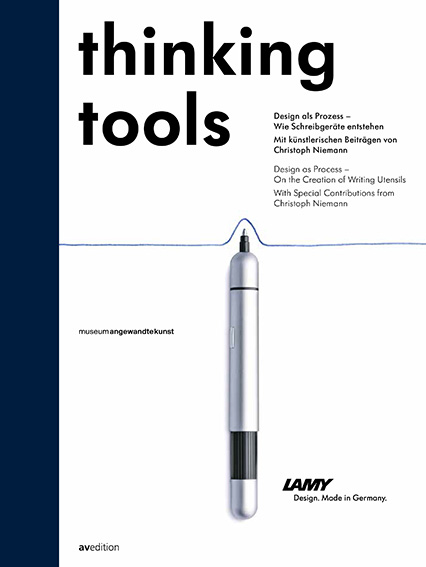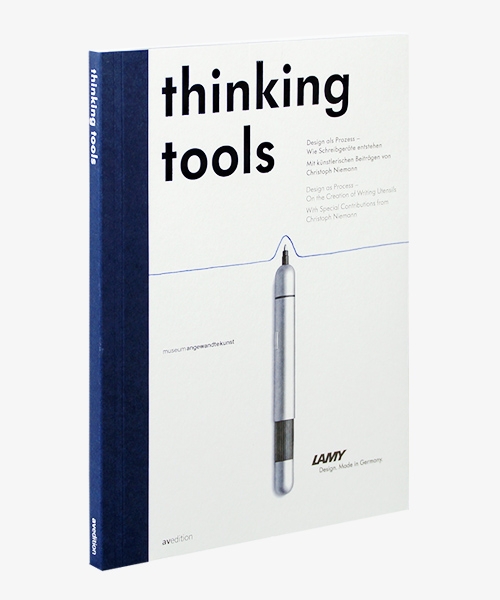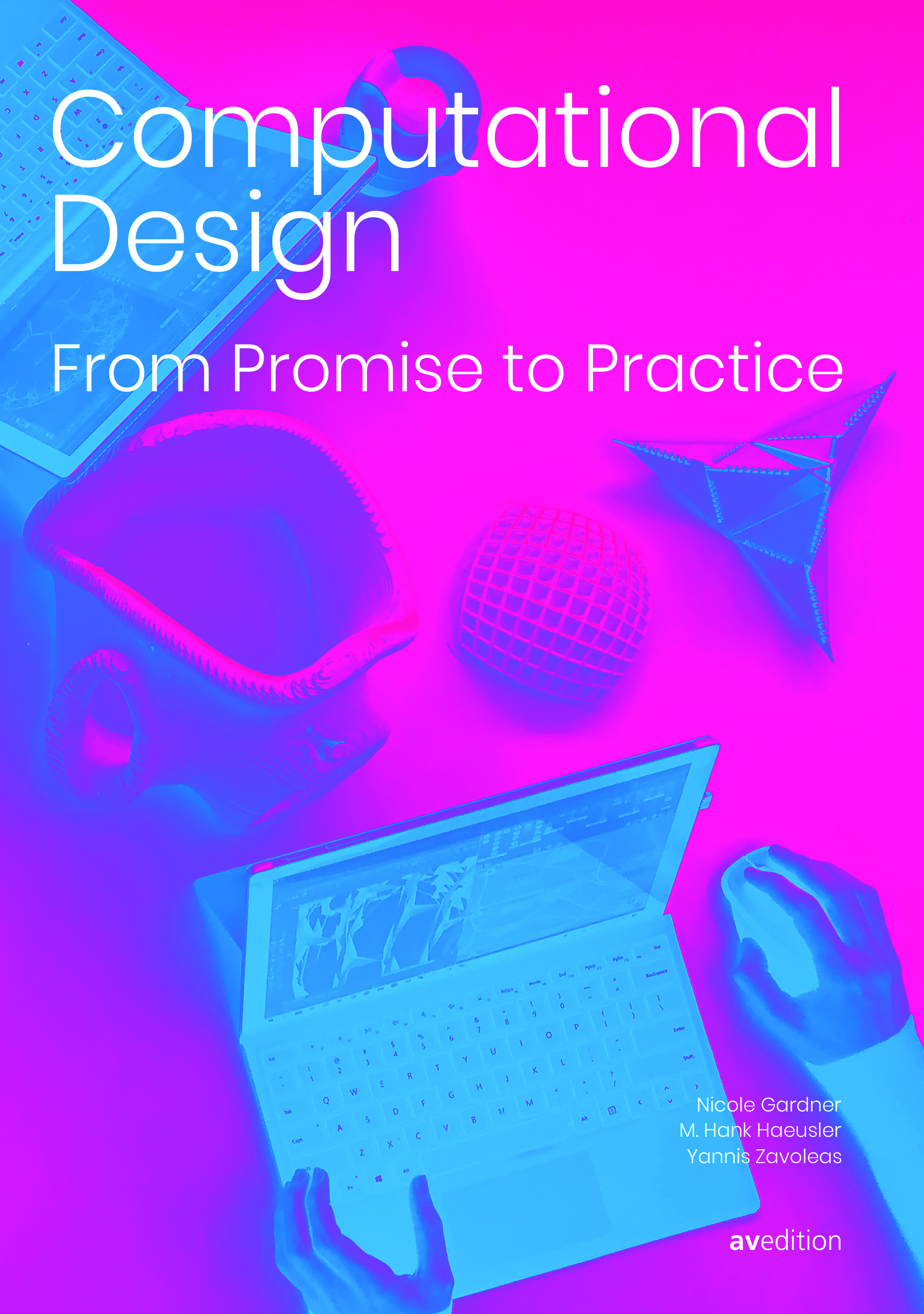Thinking Tools.
Language: German / English
Year of publication: 2016
Pages: 120
Cover: Softcover with flaps
Illustrations: Approx. 60 photos and illustrations
Dimensions: 7.1 × 9.4 in
Product information "Thinking Tools."
Design as Process – On the Creation of Writing Utensils
How are products and everyday items created which their owners like to use, value greatly and identify with? Things with a high practical value and that are functional, durable and beautiful?
Based on the writing utensils by Lamy, the catalogue shows an example of the complex design process behind creating a product, including models and sketches by Phoenix Design, Wolfgang Fabian, Sieger Design, Naoto Fukasawa, Richard Sapper or Franco Clivio.
This title is unfortunately out of stock.
Login



